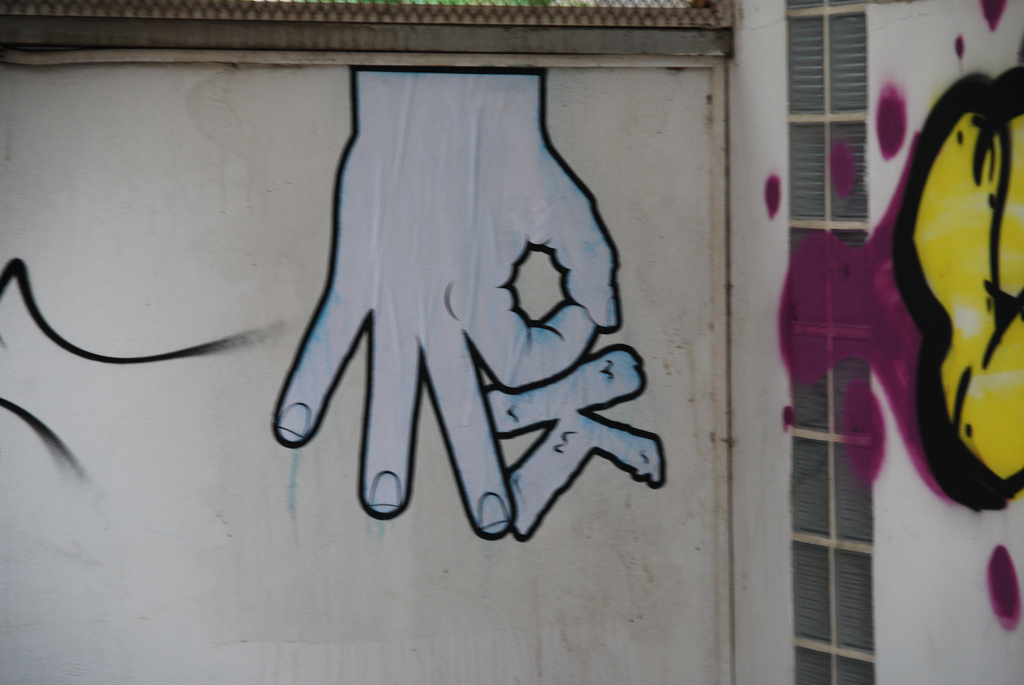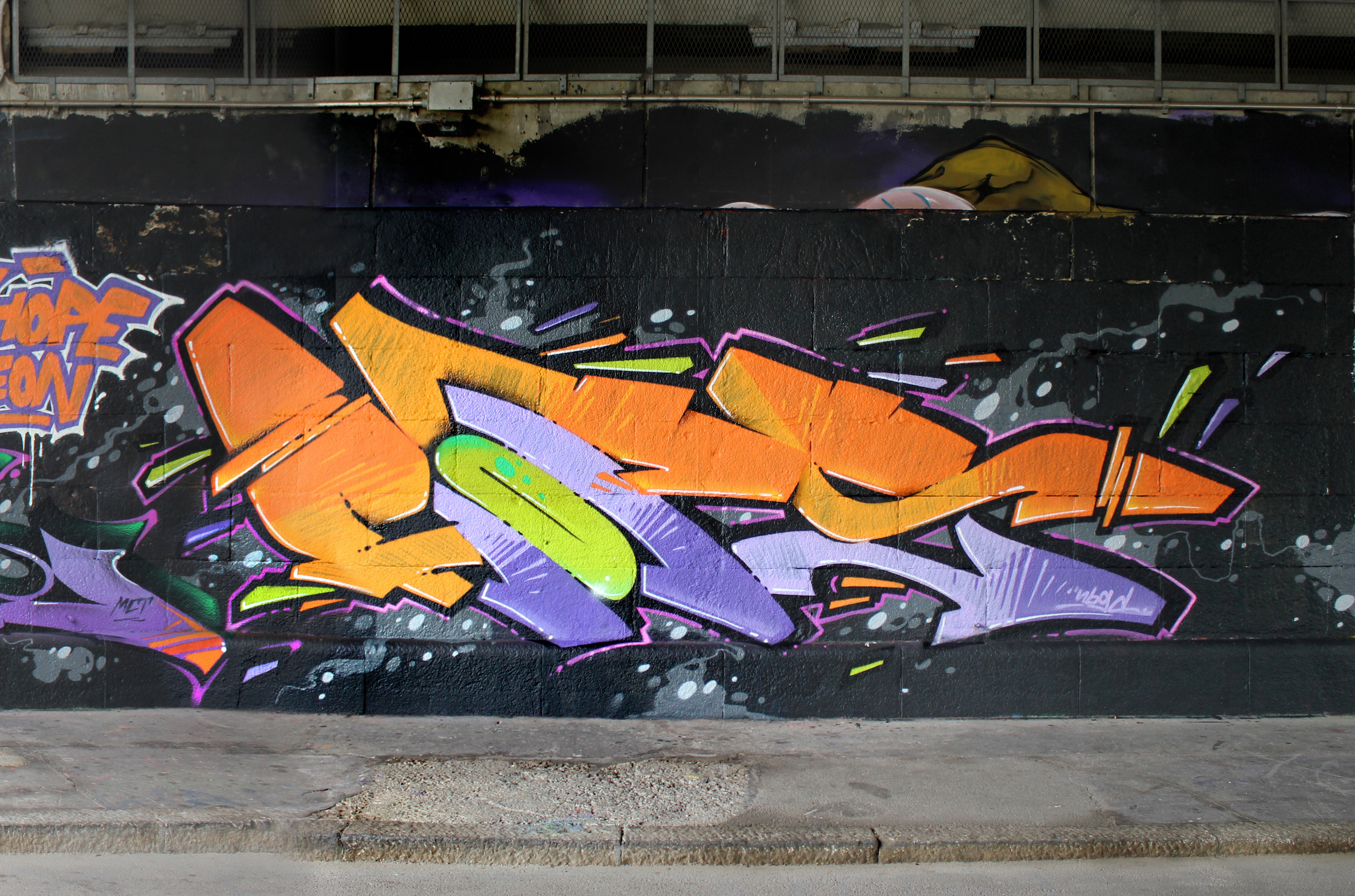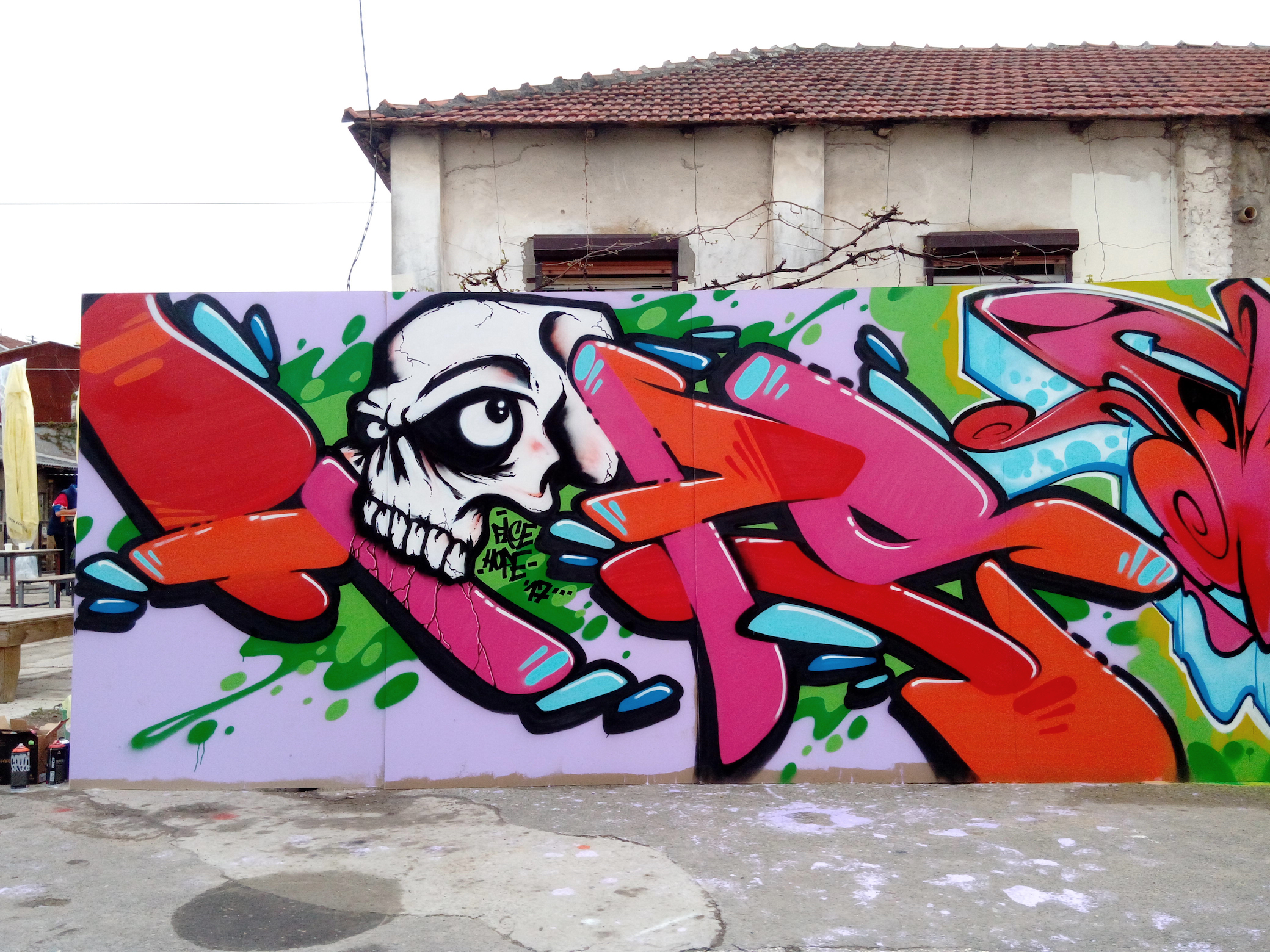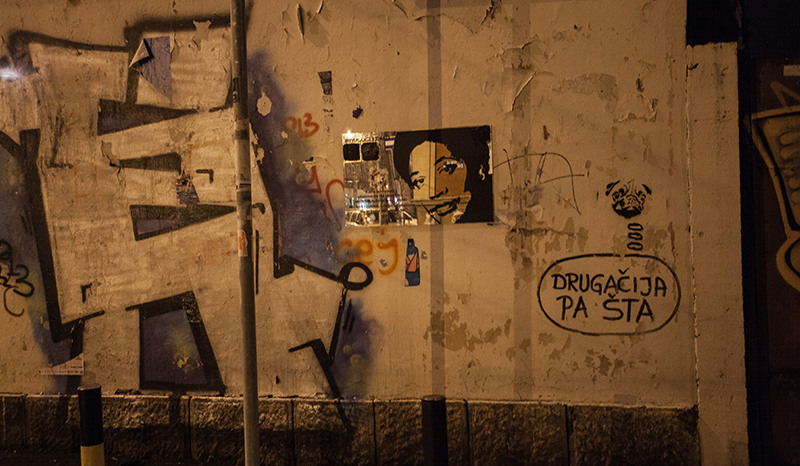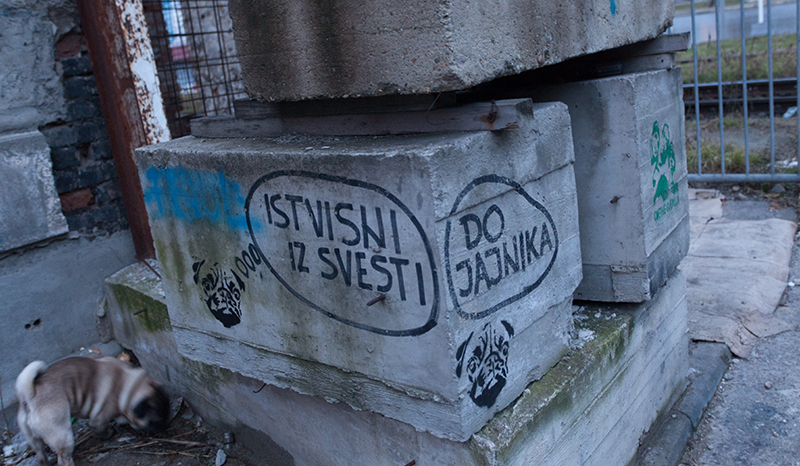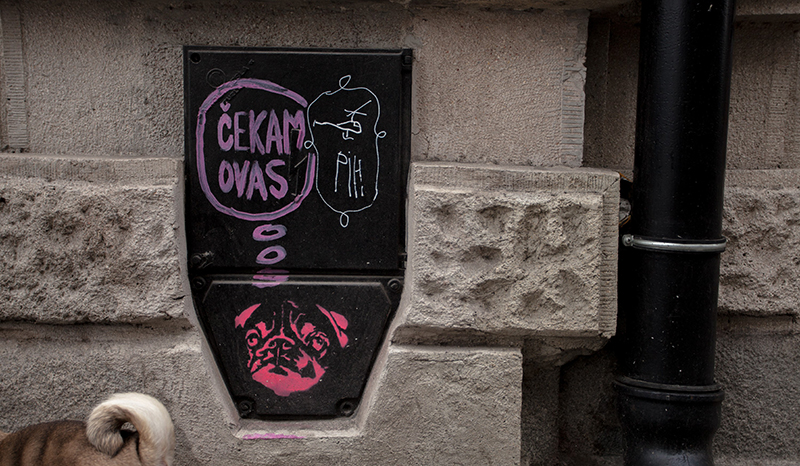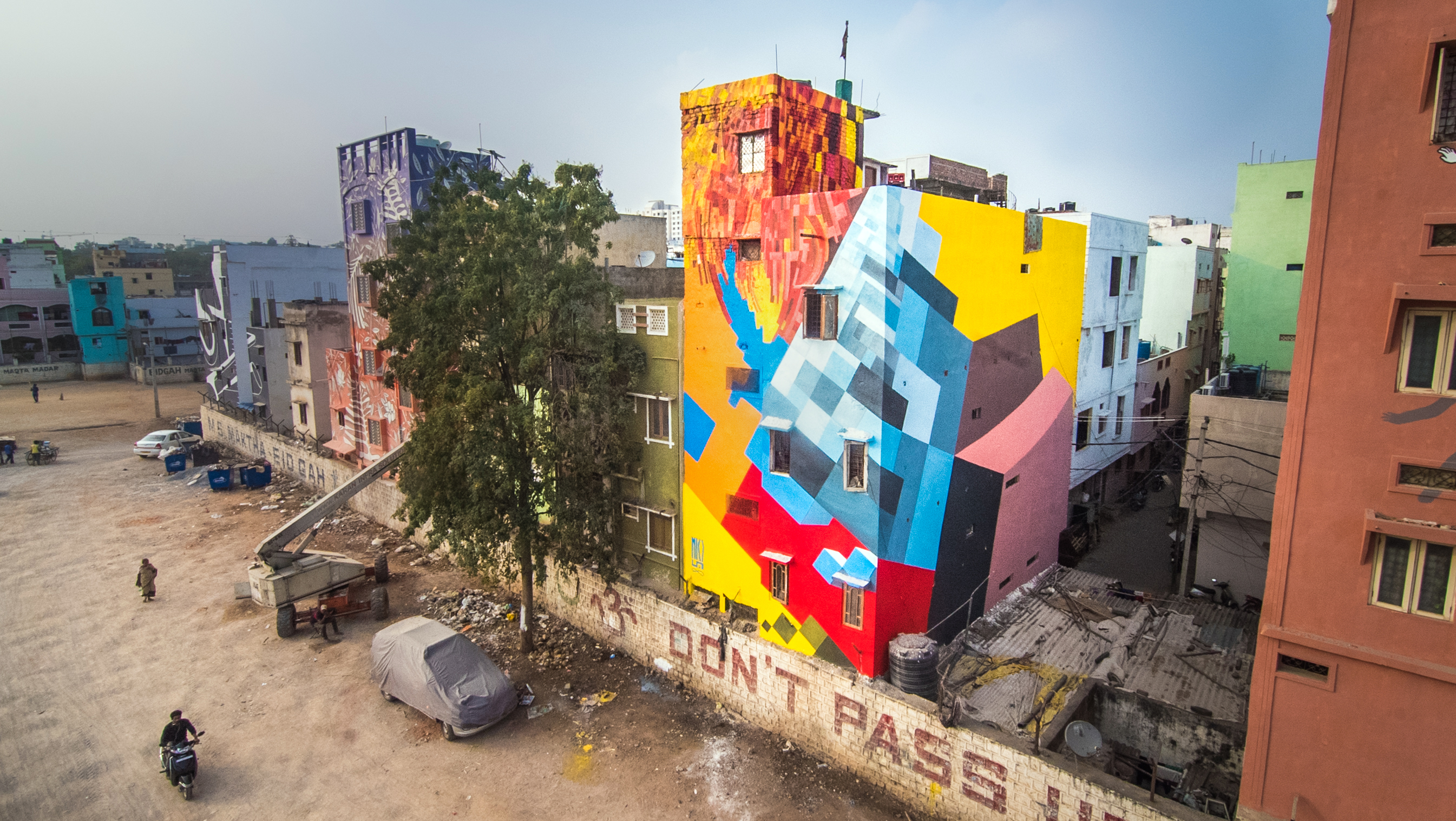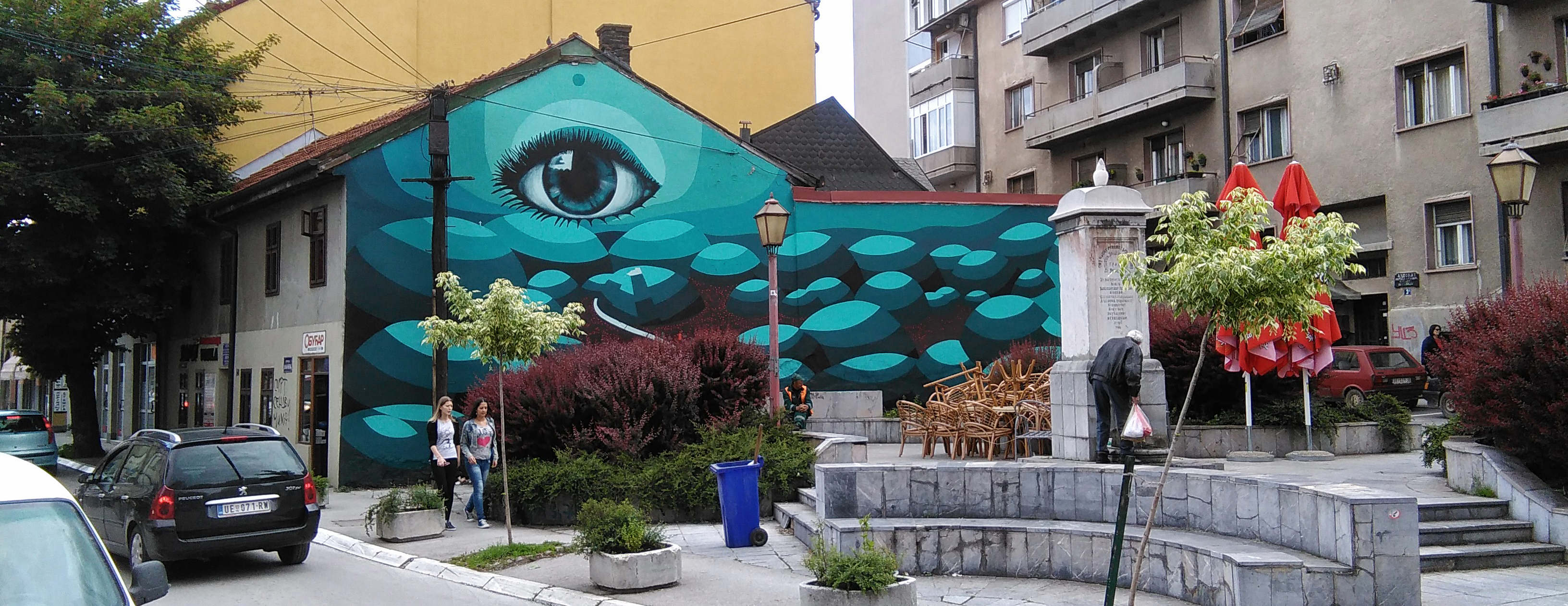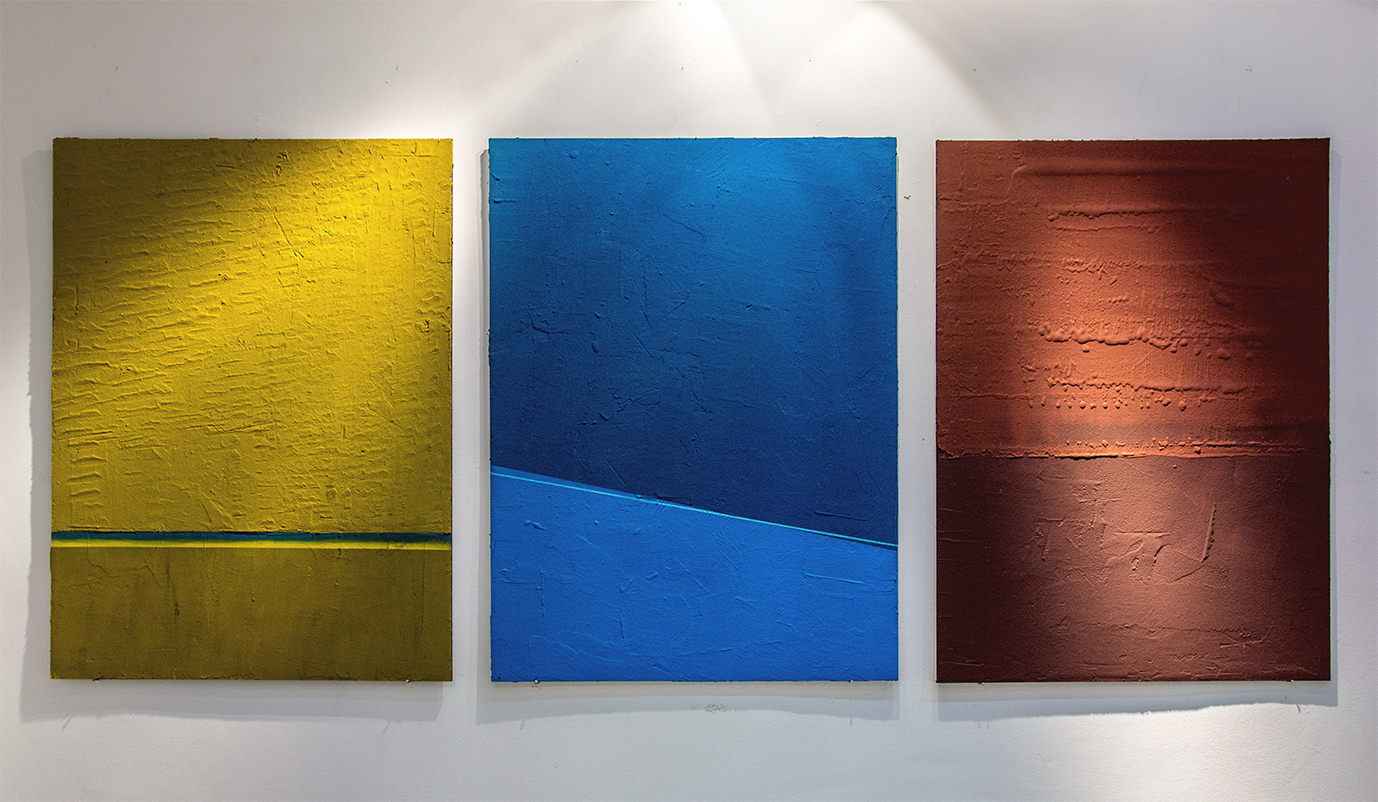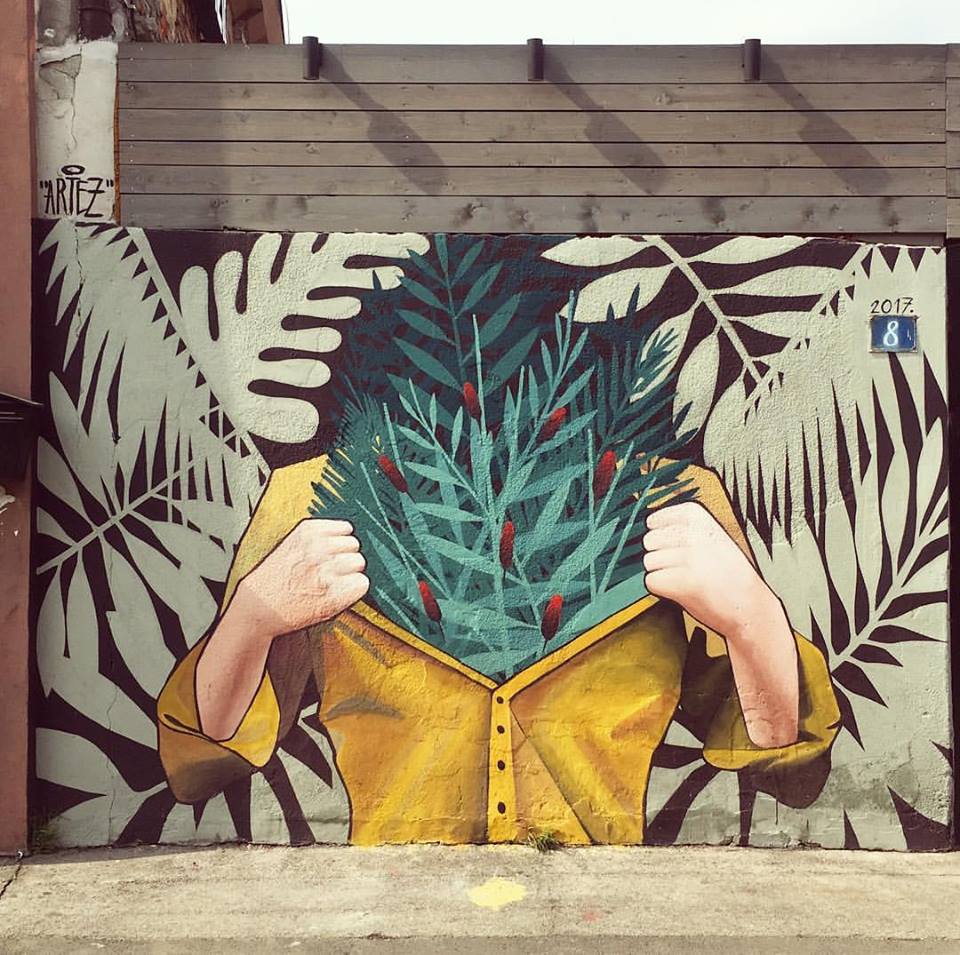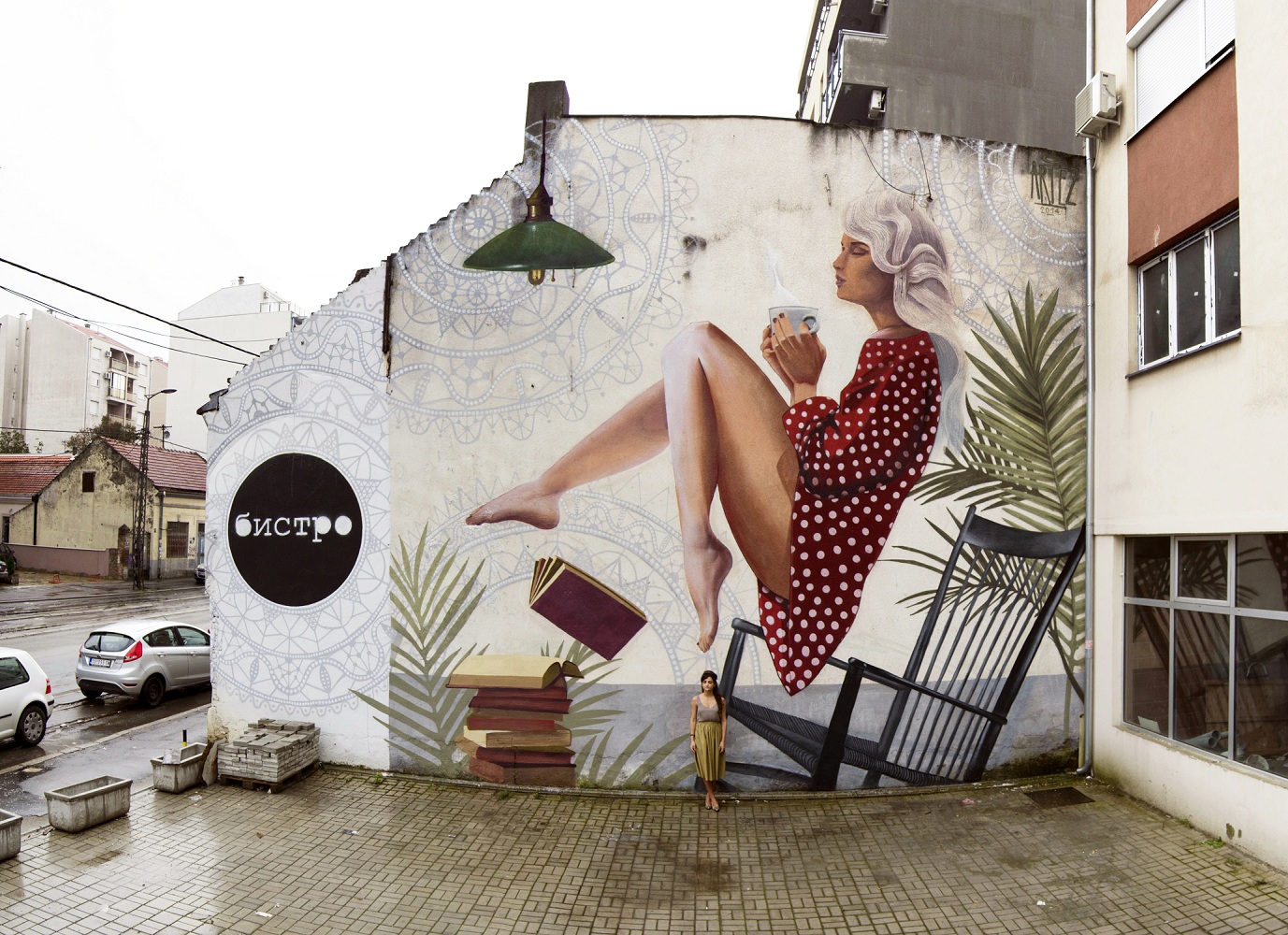Get to know Belgrade’s street artists better. In the interview #3 we are talking with Inspektor Yoda Zguzvani.
If you find yourself on the streets of Belgrade, this famous pug will be following you wherever you go. At one point you’ll figure out that things should be the other way around. Start following him, because this little pug is not just a wrinkled cute face, he is a rebel, an activist who is constantly playing with you using words to change the way you think or just to remind you to start thinking.
Check out what he shared with us.
Please, introduce yourself.
Dalmatian from Belgrade, raised by both pop and alternative cultures. Science (fiction) freak, binge watching devotee and life hacking enthusiast.
How do you define yourself?
Free-minded/spirited benevolent (politically incorrect) lunatic.
What is street art to you?
Street art is a media where you are the only censor. It’s a form of communication and rebellion, but it is also a responsibility for the public discourse. For me it’s a cocktail of art, activism, and entertainment.
What are you trying to achieve through street art?
I was growing up in Belgrade as a gay guy throughout the breakdown of Yugoslavia and street for me was both the place of freedom and fear. It was a constant hide-and-seek game, avoiding the possible violent scenarios. Similar to a battlefield, as Sherlock would have said. It was in that period that I discovered the power of words, and how any differences and conflict situations can be resolved through communication.
Many street walls contained (and still contain) violent language, so I felt the need to reply and start breaking the walls of communication built around marginalized groups. I know it sounds political, because partly it is. All my life I’ve been forced by the society and media to observe myself as a political being (they would say subject); but it is actually the quality of everyone’s life that is in question. Why should one live a life of fear or hatred? The idea of violence has been publicly justified for far too long. I’m trying to instal a worm of doubt undermining it.
We all live under the same sky, and we might as well live in harmony.
Do you find inspiration in other forms of art? (Beside visual arts)
Other (art) forms are my biggest inspiration. Visual part is just a copy/pasted face of a being I consider to be extremely benevolent. For those considering life as an ultimate form of art, life of a pug can be a great source of inspiration. Capoeira is another one: what it represents (symbol of rebellion against the oppressor), life philosophy (improving for life through life), but also a weapon (hey it’s a martial art after all, and it raises the question of responsibility on how you use it), control and balance of mind through body.
Considering my work is word based, written forms help my permanent private brainstorming sessions. Other phenomena are inspirational. I enjoy playing with PR and Marketing slogans, news headlines, and the sensationalism that floods the media.
Comedy helped me a great deal in overcoming personal tragedies and it always helps to break the awkwardness that is often in the air when sensitive subjects are brought up
How has street art changed since you’ve started?
I definitely see more diversity. At first street art interventions were limited to cleaning the hate speech from Belgrade walls. It went regional. Also many organizations started using street art for noble causes.
There are more and more organizations promoting street art culture throughout Serbia, Revitalizacija crosses my mind. More and more murals adorn (not just) Belgrade walls.
And god bless them internets.
What do you love about Belgrade’s street art?
Belgrade is a rusty city. It’s crumbling face was never restored. Belgrade street art constantly adds up to already pretty rich city art scene. There are parts that are an ever evolving etude, there are parts that keep scribbles for years and even decade(s). So, you never know what to expect. It is always a journey into the unknown.
What are your plans for the future?
1. Break current form - both written and visual
2. Insert more poetry and patterns
3. Travel and paint the region. Then the World.
Share with us one inspiring thought.
I’ll share more just to show my dark side:
The evolution (of society) is unavoidable and we only have a freckle of time to steer it.
The Universe doesn’t care of your pimple, it has its own supernova to squeeze.
Motion creates (e)motion.


